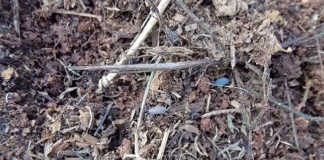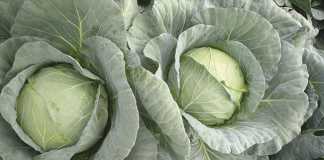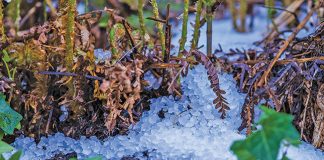Onions have triggers which influence bulbing and bolting, and it’s important to understand these to avoid pitfalls and get the most out of a particular variety.
The longer the onion grows before initiating bulbing, the larger the bulb will be. The bulb is really only shaped out of swollen leaves, so it stands to reason that the bigger the plant, the bigger the potential bulb.
This is of course theoretical as there are many other factors which may throw a spanner in the works with this complex crop.
Beds or direct seeding?
If you want to grow an onion crop that matures in autumn in a short day area, you must sow the seed early enough that the plants can get big enough to produce a bulb of desirable size.
There are a few ways of doing this. One possibility is to make seedbeds and transplant the plants. Using seedbeds seems to make sense because at very hot, stormy times of the year, it is easier to protect seedlings from extreme weather than direct sowing a whole land.
The problem is that transplant shock sets the plant back. Because of the check in development, the plants usually can’t mature in autumn and may even go through winter and bolt. You’d think it could work if you just sowed the seedbeds extra early.
The problem is that “extra early” means during the period of maximum day length. This will usually induce the seedlings to start bulbing while they’re still very small, and they may even make matching head-sized bulbs in the seedbed.
Even if the plants get past this stage and are just starting to swell when transplanted, the transplant shock will either make them bulb fully at this small size, or go into a sort of hibernation and only start growing again much later when it’s too late for the crop to be a success.
This means you’re confined to direct seeding and have to deal with the weather hazards as best you can to get the crop on the go. This means direct seeding from about the middle of January to late February. Both the variety and the climate of the area will influence the exact date.
If you try to direct seed earlier than this, you again risk the small plants starting to bulb. This is reinforced by any shock the plant may suffer, such as a heatwave, drought stress, too little nitrogen or even a hailstorm.
Bulbing is a survival mechanism at this stage. If the plant feels threatened, bulbing lets it start again when conditions are favourable.
It will want to be sure that conditions are permanently improved before it starts growing again, and the delay until this point mean you’ll miss the season.
Experience
Another hazard in this system is that it’s hard to determine the seeding rate. It’s a hazardous season, so should you increase the seeding rate to try and compensate? If so, what do you do if a period of mild weather lets all the seed establish and gives you a stand that’s too dense?
Only by experience will you get to an acceptable compromise. Remember that when determining the seeding rate, you have to consider seed vigour as well. Taking all these factors into account, it’s clear that areas which receive less rain stand a better chance of getting a suitable stand, especially when you control the micro-climate with frequent, light irrigations.
The constant evaporation will keep the temperatures low enough for good germination. Clearly, humid areas are at a disadvantage here as the cooling effect after irrigation will be much lower. Solid set or centre pivot irrigation set-ups are therefore almost a must for success when planting this way.
There are hazards aplenty, but getting the crop onto the market in late April, May and early June ensures a better price than you can expect for the rest of the year.
Contact Bill Kerr on 016 366 0616 or email [email protected].
Caption:
Medium sized onions like these with few or no split bulbs are produced by direct seeding for May/June harvesting in short day areas.
BILL KERR













